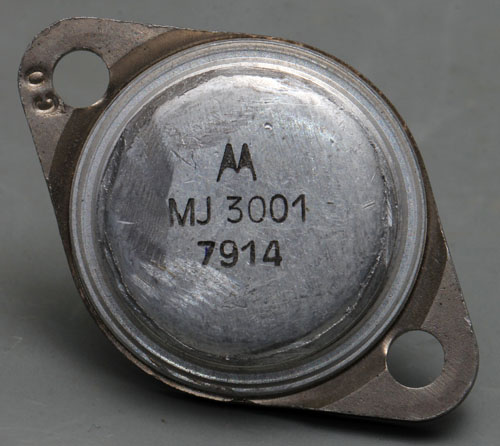
Now the Darlington MJ3001: 80V, 10A, 150W
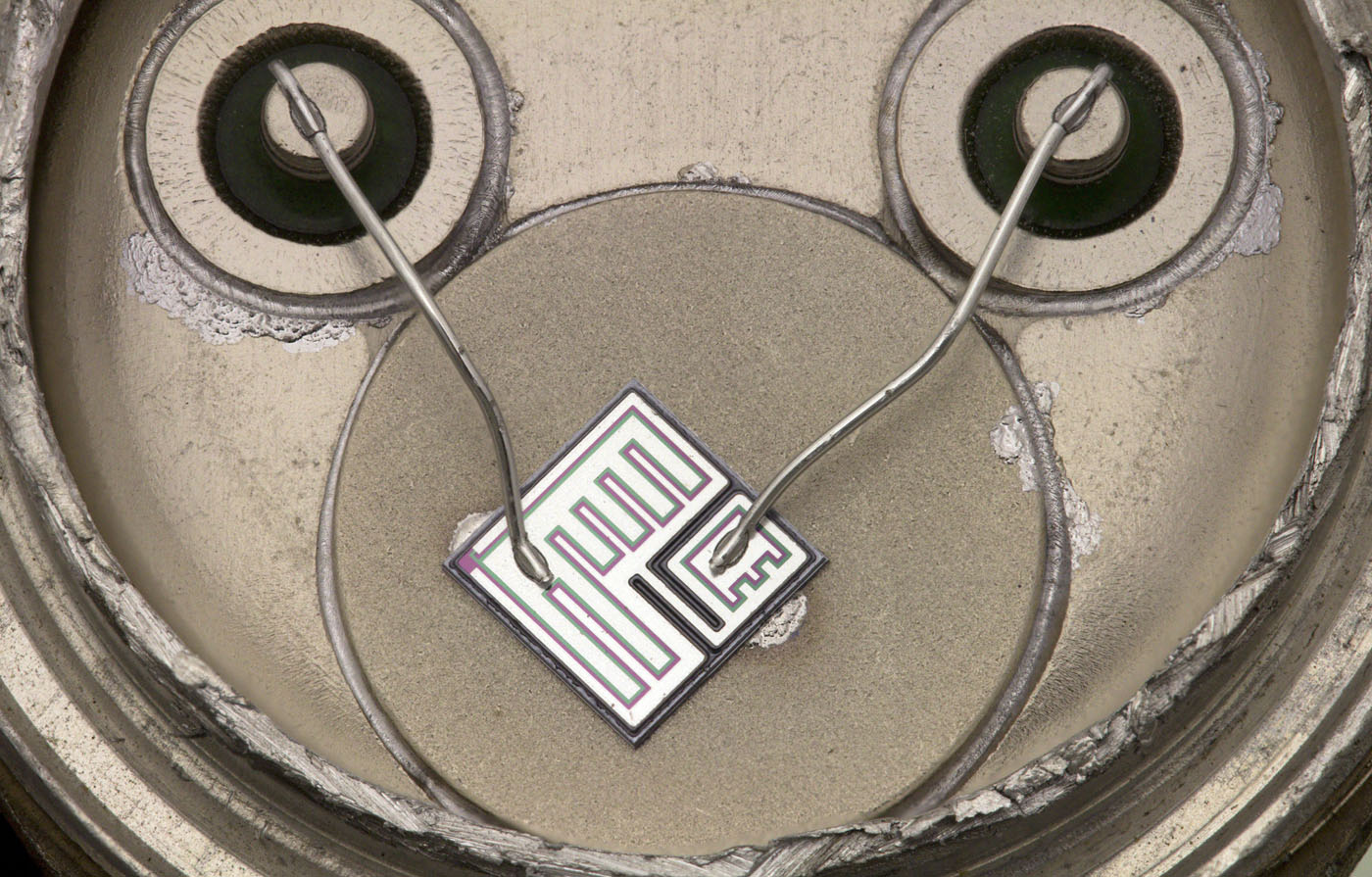
Nothing special to see but...
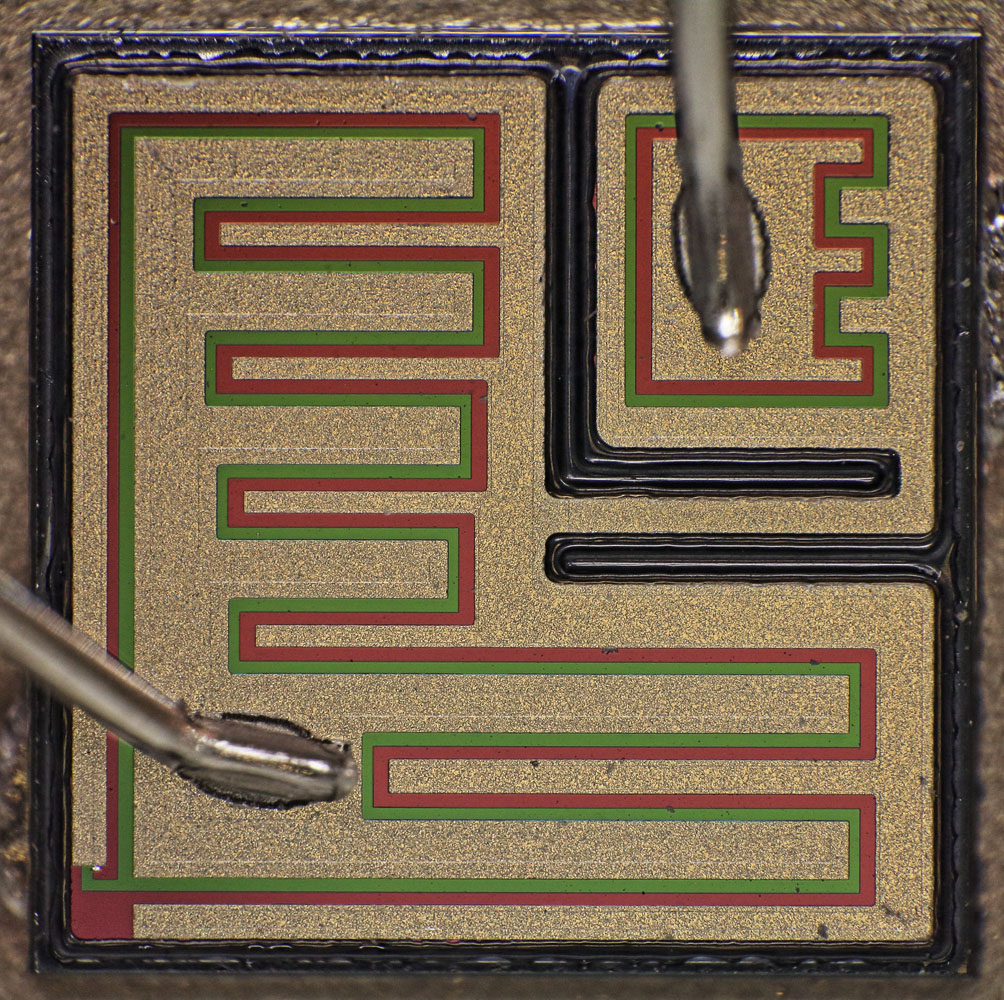
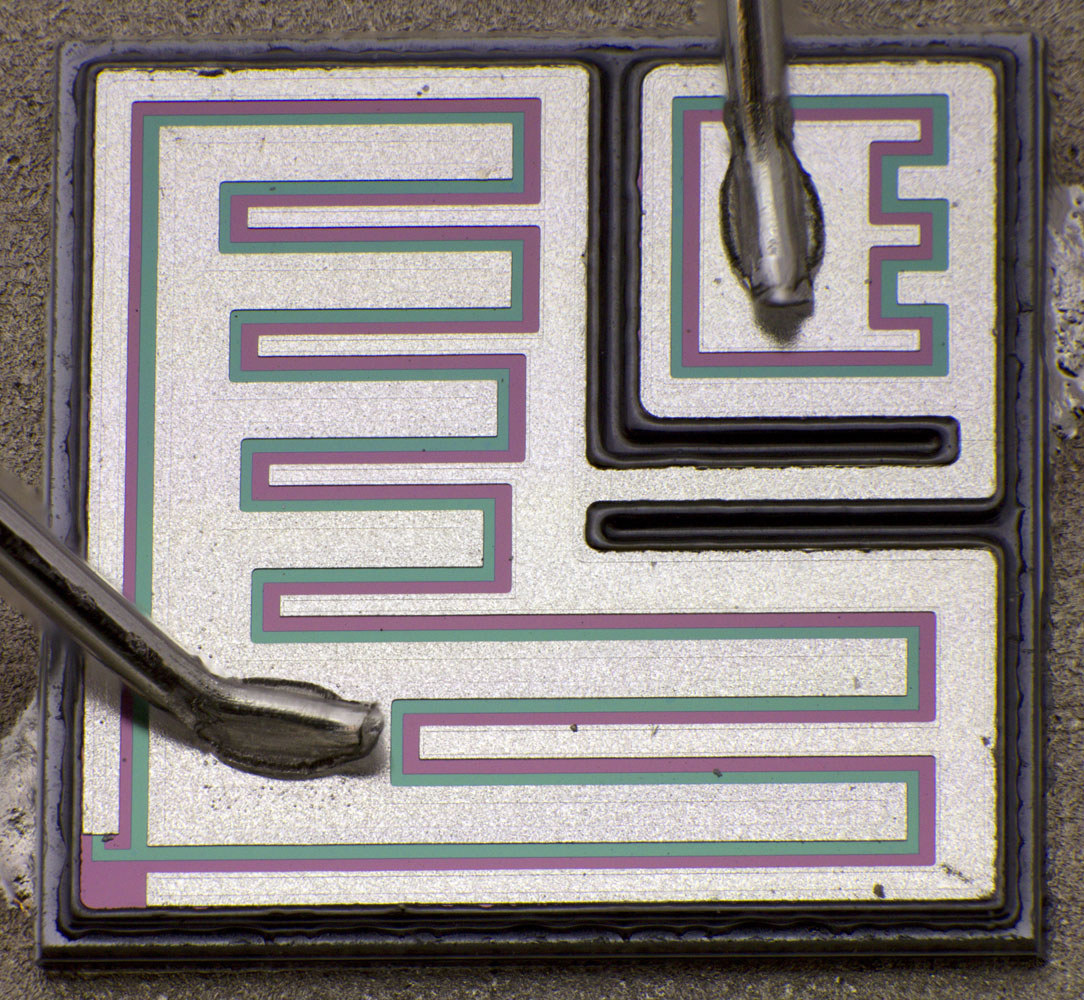
...the die is interesting!

There are two trenches isolating the driver transistor.
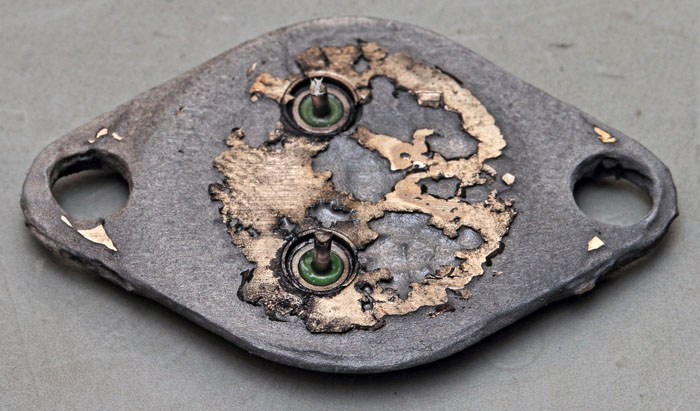
Let´s remove the metal layer. The package got dissolved too.

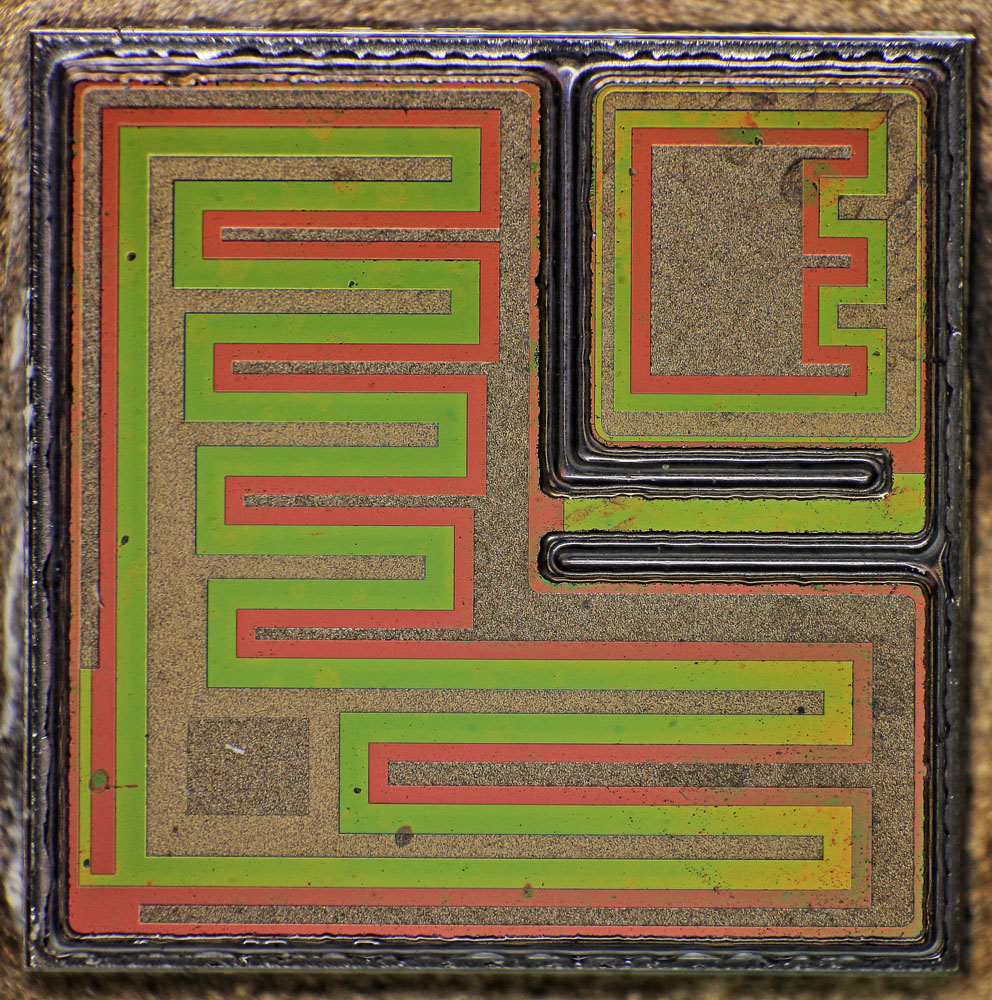
Now we see a little bit more.
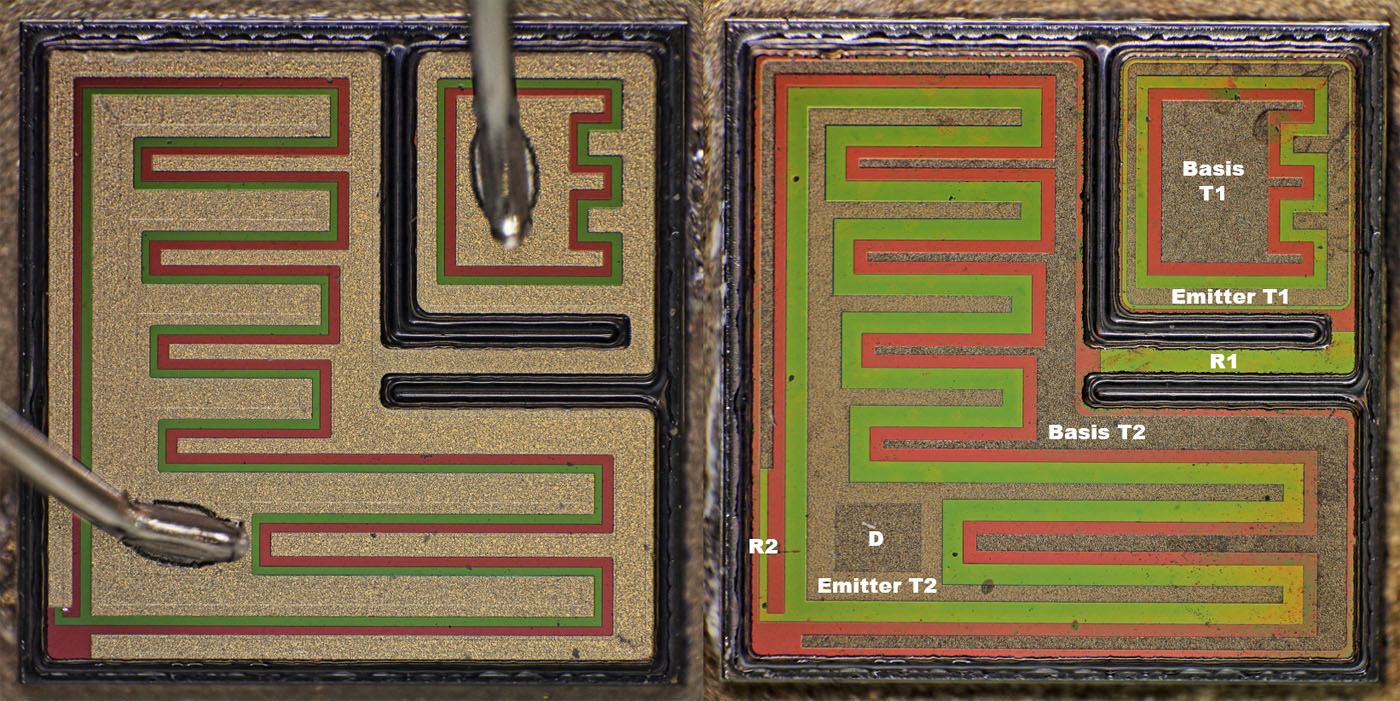
In the upper right corner we have the driver transistor. The base area in the middle of the area and the emitter like a ring around (above) it.
The metal layer connects the emitter of the driver transistor via a catwalk with the base area of the power transistor.
The power transistor is constructed like other power transistors: A base area with a emitter island above it.
You have to look closely to find the base emitter resistor R1. It is build with the red base area leading from the base area of the driver transistor, under the emitter of the driver transistor, over the catwalk to the base area of the power transistor which is connected to the emitter of the driver transistor over the metal layer.
The green area on the catwalk forms a pinch resistor to get the high resistance (2k).
The base emitter resistor R2 is built with the green emitter material of the power transistor. There is a small short stub in the lower left corner which is enough to get the 50

.
The freewheeling diode is integrated underneath the emitter bonding area. There is a opening in the emitter area so the metal layer connects to the base area which gives you the freewheeling diode from the collector to the emitter of the MJ3001.
The MJ3001 is not really built like the transistor described in the patent US2663806. The base areas are still connected.
https://www.richis-lab.de/Bipolar60.htm 